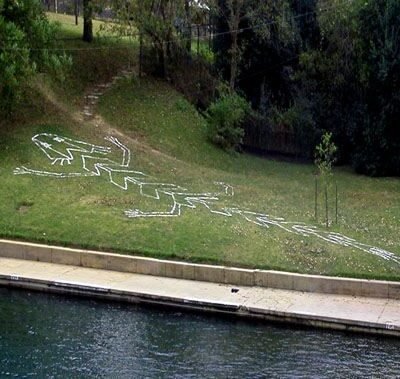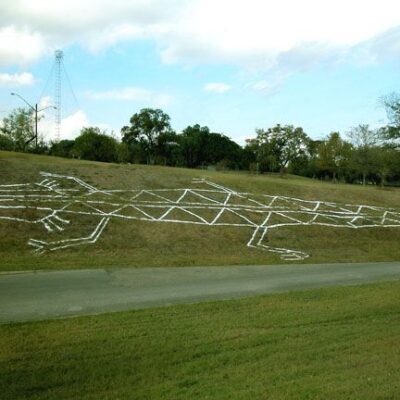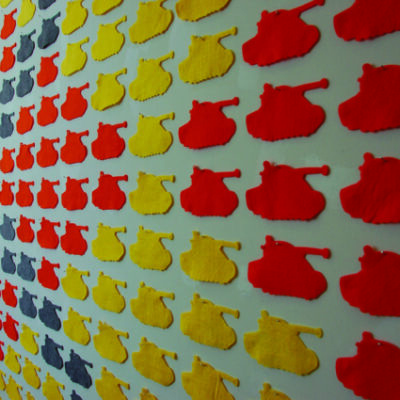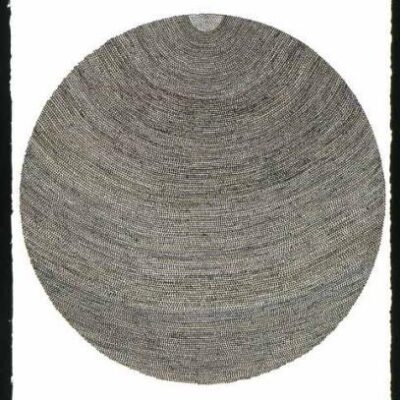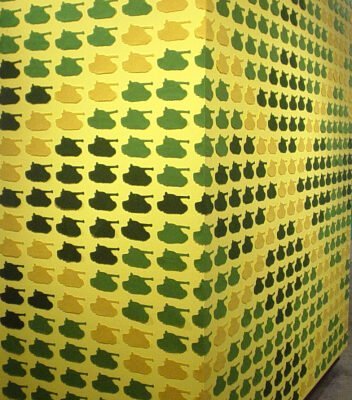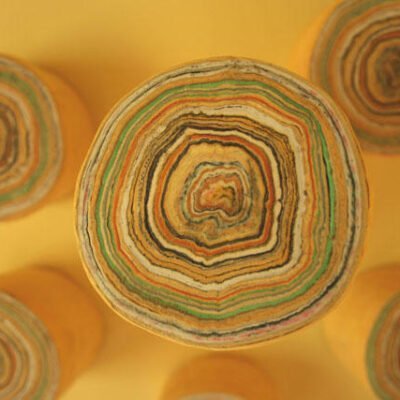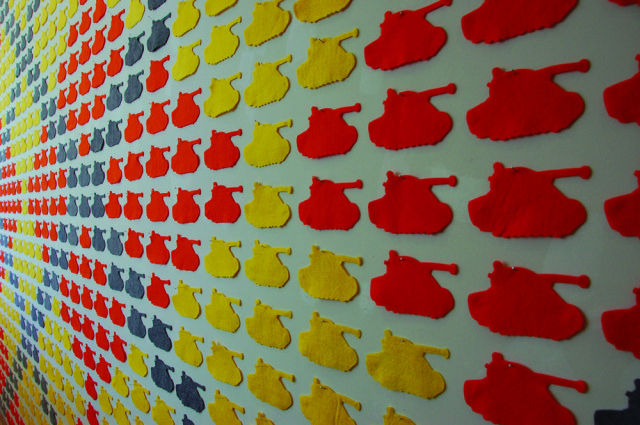

Pattern Pattern Pattern
Pattern Pattern Pattern features Amanda Barr, Rosemarie Fiore, Germaine Keller, Laura Paulini, Lisa Solomon, Jana Swec, and Shea Little. These seven artists use ritual, repetition, and revelation to transcend decoration and, through order, reveal significance. Pattern underlies every aspect of our lives and is part of the basic structure of the environment we live in. This show reminds us of the presence of pattern all around us, from intricate tree rings constructed from recycled paper, to the surprising designs made by a Scrambler carnival ride, to the monotony of war.
In conjunction with Pattern, Pattern, Pattern, artist Germaine Keller used the lawns of Barton Springs as her canvas to uncover the always present, but rarely seen, endangered salamanders in a temporary public art piece.
Locations:
The Hill at Barton Springs Pool : The Barton Springs Salamander, Eurycea sosorum, is a native Austinite. Barton’s Springs in Zilker Park are the only places in the world where it lives. These small, endangered salamanders live in the water their entire lives and their survival depends on clear, clean, cold, flowing spring water. There are less than a few hundred of these endangered salamanders left in the wild, although their presence in great numbers would tell us that the water is clean enough to drink. Their home is at risk from decreasing water quality and quantity as Austin and surrounding towns grow.
Entrance to Zilker Park and Barton Springs : The Austin Blind Salamander, Eurycea waterlooensis¸ is another small, solely aquatic salamander that lives only in Barton’s Springs in Zilker Park. These salamanders live in the underground caves and crevices of the aquifer below Barton Springs Salamanders. Their survival not only depends on clean spring water, but also their ability to survive in a dark environment where food is sparse. They rarely come to the surface, so we don’t know exactly how many there are in the wild, but we’ve never seen more than 20 at one time.
